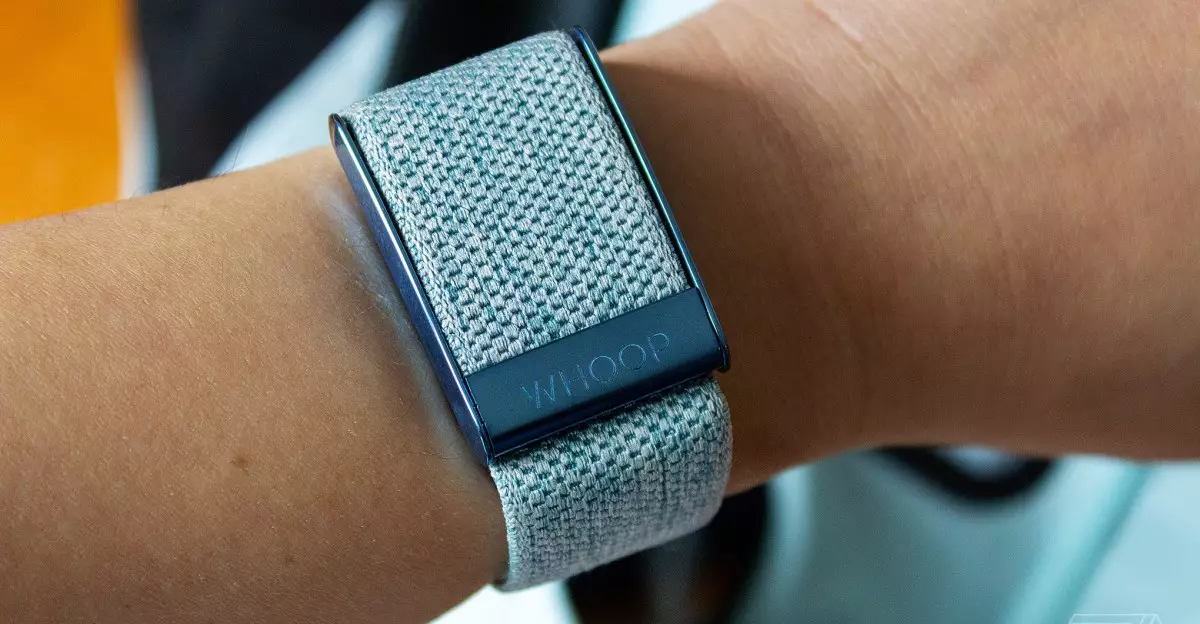In the fast-paced world of fitness technology, Whoop was once a beacon of innovation and customer loyalty. The company’s fitness trackers have garnered a devoted following, thanks to their unique subscription model that offers continuous updates and advanced metrics for health-tracking enthusiasts. However, the recent release of the Whoop 5.0 fitness band has disrupted this harmony, igniting a firestorm of user dissatisfaction regarding hardware upgrades. This level of backlash is surprising, given Whoop’s past reputation, and it opens a critical dialog about company transparency and user trust.
What triggered this tide of outrage was Whoop’s apparent reneging on a promise regarding free upgrades. Initially, the company indicated that users who had subscribed for more than six months would be eligible for the next-gen hardware upgrade. Yet, as details unfolded, it became clear that the upgrade offer was more selective than initially advertised. Users were taken aback by the sudden stipulation that only those with more than 12 months remaining on their subscription could receive a Whoop 5.0 for free. This distinction created a chasm of confusion among the user base, which was further intensified by unclear communication from the company.
Clarity Amidst Chaos: Whoop’s Response
In the days following the uproar, Whoop moved into case management mode, attempting to smooth over the PR disaster it found itself in. In a recent Reddit post, the company assured users that it would provide free upgrades to subscribers with more than a year left on their plans. However, this promise sounded hollow to many users, especially since they had been caught off guard by the very nature of how the two-tier system was communicated.
The fallout track has left multiple users feeling dissatisfied and questioning their loyalty to the Whoop brand. Some felt betrayed that they would have to extend their subscriptions to gain access to the new device, even if they had 11 months remaining on their current terms. Whoop’s claims of a simple blog post error did little to quell the mounting frustrations, with many users expressing skepticism over the legitimacy of that explanation.
The Role of Communication in Consumer Trust
This incident raises a pivotal question about transparency in customer relations for subscription-based services. When companies post announcements or policy changes, they have a responsibility to communicate clearly and effectively. The blending of different policies—earlier promises versus recent updates—can lead to severe trust deficits among consumers who feel misled because of mixed messages.
Critics pointed out that the erstwhile offer to upgrade after just six months quickly ballooned into a far more restrictive requirement, igniting frustrations and feelings of discontent. The mishap isn’t merely a logistical blunder; it’s a deep-seated issue that speaks to broader concerns surrounding brand integrity and consumer expectations.
Market Reaction: User Sentiment and Brand Loyalty
Amid the chaos, social media has become a megaphone for dissatisfaction. Reddit threads are filled with users deliberating on whether to continue their subscriptions or jump ship to other competitors like Fitbit or Apple Watch. While some users remain open to nuanced discussions about the policy changes, others have expressed verbatim threats to cancel their subscriptions. Indifference to customer feelings can lead to broader ramifications, pushing consumers to seek alternatives in a market that is brimming with options.
What adds complexity to this situation is the historical sentiment surrounding the brand. Whoop’s appeal has always been rooted in its community-driven approach to fitness and wellness. Members often viewed the company as an ally in their health journeys, but the recent upgrade tumult has prompted many to reassess this relationship.
The Need for Evolution in Consumer Engagement
Moving forward, Whoop must evaluate not only its tactical response to this misunderstanding but also its strategic approach to audience engagement. Engaging users with consistent, accurate communication is essential to rebuilding trust. Enhancing clarity around upgrades, policies, and new offerings—not just with light-hearted campaigns but through serious customer dialogues—will play a crucial role in revitalizing the brand’s image.
In sum, Whoop stands at a crossroads, learning an invaluable lesson on customer loyalty and the critical importance of transparent communication. As the scene continues to evolve, one must wonder whether the company can gracefully navigate this turbulence and re-establish itself as a leader in the health tech industry, or if it will falter in the face of growing consumer discontent.

